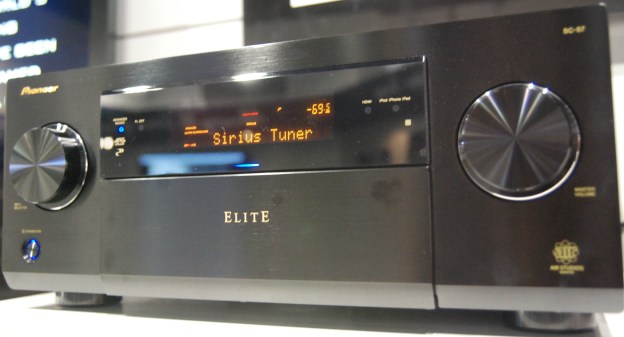 While Pioneer isn’t announcing anything new specifically for the CEDIA Expo this year, we did get a chance to take a closer look at some of the new technologies the company recently announced. Among the more interesting of them is Pioneer’s recent advances in Class-D digital amplification.
While Pioneer isn’t announcing anything new specifically for the CEDIA Expo this year, we did get a chance to take a closer look at some of the new technologies the company recently announced. Among the more interesting of them is Pioneer’s recent advances in Class-D digital amplification.
Reserved for the two models in the Elite SC line (the $2,000 SC-57 and $1,600 SC-55) Pioneer’s “D3” version of Class-D digital amplification promises to abate the problems that have plagued digital amps in the past.
We had a chat with Russ Johnston, Executive VP of Pioneer’s home electronics department, who took a moment to take us through some of the advantages that D3 amplification is meant to provide. At the top of the list: improved musicality.

The other major factor involved in getting highly musical sound out of D3 amplification apparently involved a close working relationship with highly regarded Air Studios, which has stamped its certification on both of the Elite-SC receivers.

Some of the other benefits of this type of amplification are less wasted energy, and as a direct consequence, much less heat. Among other things, the reduced power requirement allows the receiver to fully power all of its channels for extended periods of time without much strain and very little heat. In fact, we noted a significant and palpable difference in heat output between a SC-57 and a VSX-1021 that sat right next to each other, amplifying the same signal at the same level into an identical load.
For some more information on the amplification at work in Pioneer’s latest Elite SC line, check out our video from the CEDIA floor.



